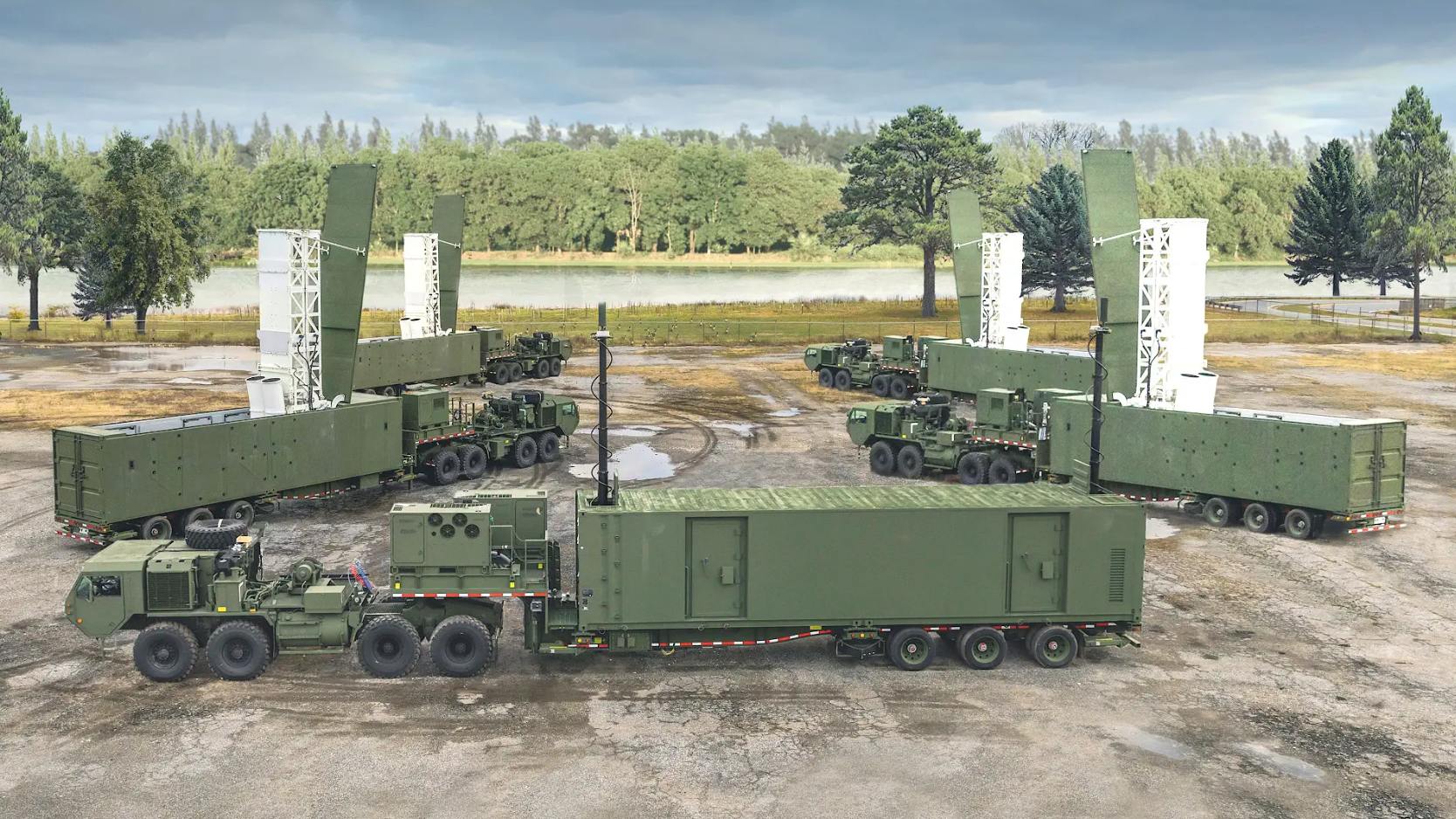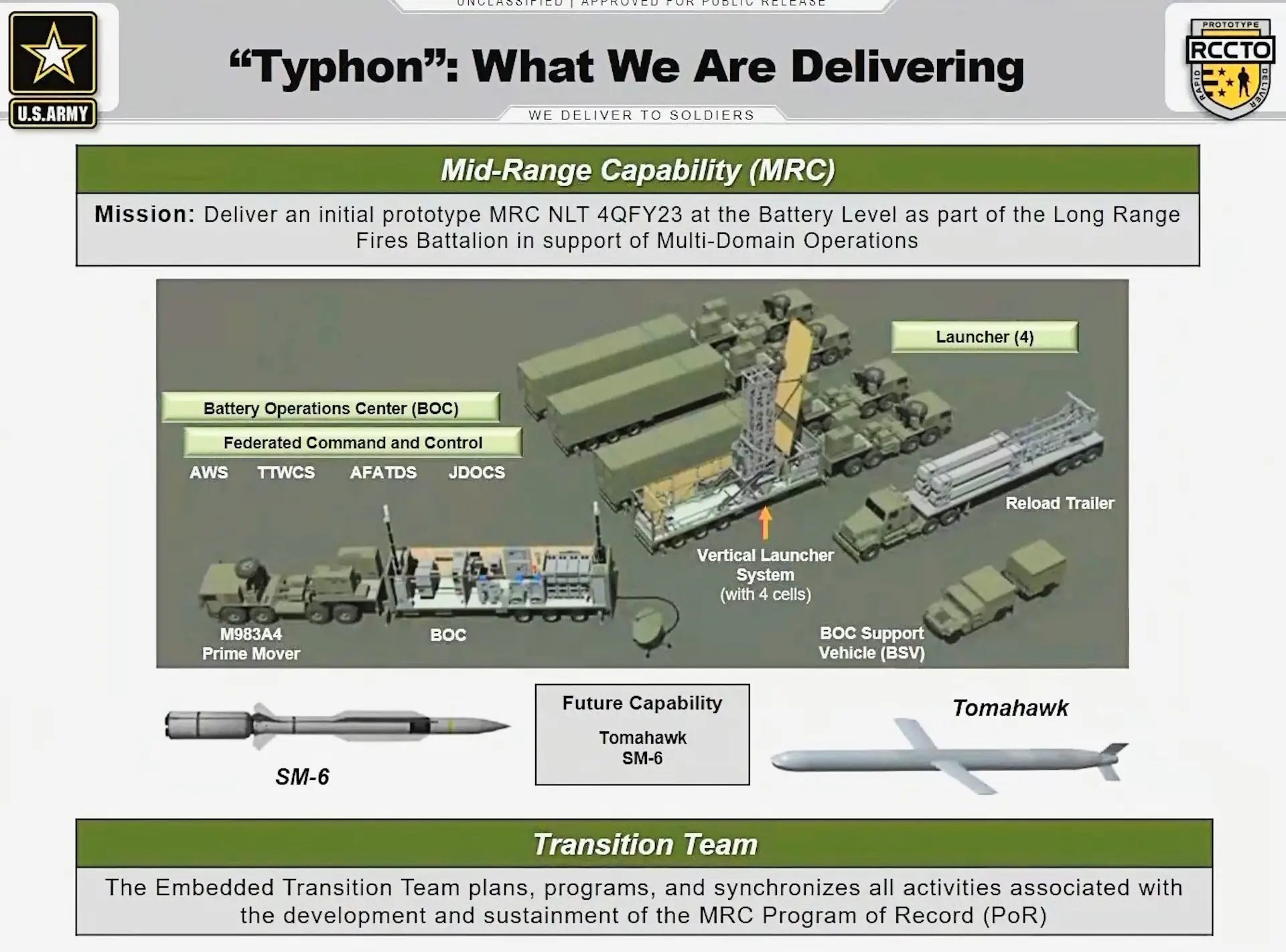The United States Army sent its ground-based missile system ‘Typhon’ to participate in the military drills in the Philippines. This marked the first overseas deployment of this cutting-edge system at a time when tensions with the People’s Republic of China (PRC) are at an all-time high.
A statement released by the US Army Pacific (USARPAC) stated that a Typhon system also called the Mid-Range Capability (MRC), arrived in the Western Pacific on April 7 to take part in Exercise Salaknib 24.
The US kicked off the drills with the Philippines, a seasoned ally in the region, on April 8. Salaknib is an annual bilateral exercise led by the Philippine Army and sponsored by the US Army Pacific.
This time, however, it comes in the wake of an increasingly belligerent China, which routinely carries out aggressive maneuvers against the Filipino forces in the South China Sea.
The Typhon system can launch various missiles, including the Tomahawk cruise missile, which has a range exceeding 1,600 kilometers, and the new SM-6 interceptor missile. The Typhon can fire a Tomahawk to obliterate a target on land or at sea.
Additionally, the SM-6 installed on Typhon is designed to be used mainly as a short-range ballistic missile against targets both on land and at sea. The Army has also referred to it as a “strategic” weapon system that would be employed against more valuable targets such as command and control centers and air defense installations.
The deployment of the system is significant for multiple reasons. First, all land-based missiles, conventional and nuclear, with a range of 500-5,500 kilometers, were forbidden under the 1987 Intermediate-Range Nuclear Forces Treaty (INF) between the US and the former Soviet Union.
The US, however, withdrew from the INF in 2019, and the US Army and Marine Corps subsequently started extensive projects to create brand-new medium-range missiles. These missile systems are now considered to be formidable weapons against China in the Indo-Pacific now that the threat of a military conflict between China and the US looms large.

Some media reports and military watchers suggest that the system could be deployed in Luzon for military drills. Northern Luzon is situated along the first island chain that divides mainland Asia from the Pacific. This is supposedly the area where the system has been deployed for Salaknib 2024.
Typhon’s missiles can cover not only the entire Luzon Strait but also the Chinese coast and multiple People’s Liberation Army bases in the South China Sea. The deployment of these lethal missiles for drills in what constitutes China’s backyard could trigger a furious response from the Chinese.
In the past, the US Army had stated that it would ship one of its Typhon systems overseas this year, but it had not specified where or when. Currently, there is no information about whether the system will be involved in a live firing test and where exactly it will be stationed during the drills.
While the details are scant, reports indicate that the United States is currently exploring the permanent deployment of this system to the Indo-Pacific region. In any potential higher-end confrontation, especially against China, the US military wants more options for hitting targets on land, at sea, and in the air throughout the enormous expanses of the Indo-Pacific area—the Typhon provides it with that option.
The US-Philippines Axis Against China
The recent drills and arrival of the system come at a time of growing defense cooperation between the United States and the Philippines as the latter grapples with frequent showdowns staged by the belligerent Chinese Coast Guard (CCG). The tensions reached a head last month when a CCG vessel collided with a Filipino ship on a resupply mission.
For its part, the US has supported the Philippines against Chinese aggression in the region. US President Joe Biden recently told Filipino President Ferdinand Marcos Jr. that their alliance was ironclad and emphasized that their mutual defense treaty covered attacks on the Filipino military forces.
Biden said the US treaty obligations to its Pacific allies, like Japan and the Philippines, were “ironclad.” “Any attack on Philippine aircraft, vessels, or armed forces in the South China Sea would invoke our mutual defense treaty,” Biden said. A trilateral cooperation between the US, Philippines, and Japan is also being worked out at the behest of the US.

This makes the timing of the US-Philippines army drills significant. A press release from the USARPAC said, “By bolstering our collective readiness with the Armed Forces of the Philippines, Salaknib improves our operational capabilities and strengthens the longstanding and strong US-Philippine Alliance, displaying our dedication to a free and open Indo-Pacific.” The drills and the arrival of the Typhon are believed to be a clear message to Beijing.
While the US is bolstering its military cooperation and adding more teeth to Manila’s combat capability, the Southeast Asian country has demonstrated that it is not interested in giving Washington any more access than it already has. The Philippines is displaying more political autonomy than earlier, even though the hostile Chinese continue to stare at them.
Asserting that China’s assertive actions in the disputed South China Sea are what initially prompted the US military’s presence in multiple camps and locations across the country, the President of the Philippines stated that his administration had no intention of granting the US military access to further Philippine military facilities.
After assuming office in 2022, President Ferdinand Marcos Jr. granted US forces access to four more Philippine military stations, bringing the total to nine locations where US troops are allowed to rotate indefinitely under the Enhanced Defense Cooperation Arrangement (EDCA).
“The Philippines has no plans to create any more bases or give access to any more bases,” Marcos said without elaborating. However, when asked if providing American forces access to Philippine bases had triggered Chinese operations in the South China Sea, Marcos responded that the access was prompted by China’s aggression in the region and not the other way around.
He said, “These are reactions to what has happened in the South China Sea, to the aggressive actions that we have had to deal with”. He was referring to the use of lasers and water cannons by Chinese coast guard vessels to dissuade Philippine ships from entering the territory that Beijing claims as its own.
- Contact the author at sakshi.tiwari9555(at)gmail.com
- Follow EurAsian Times on Google News




